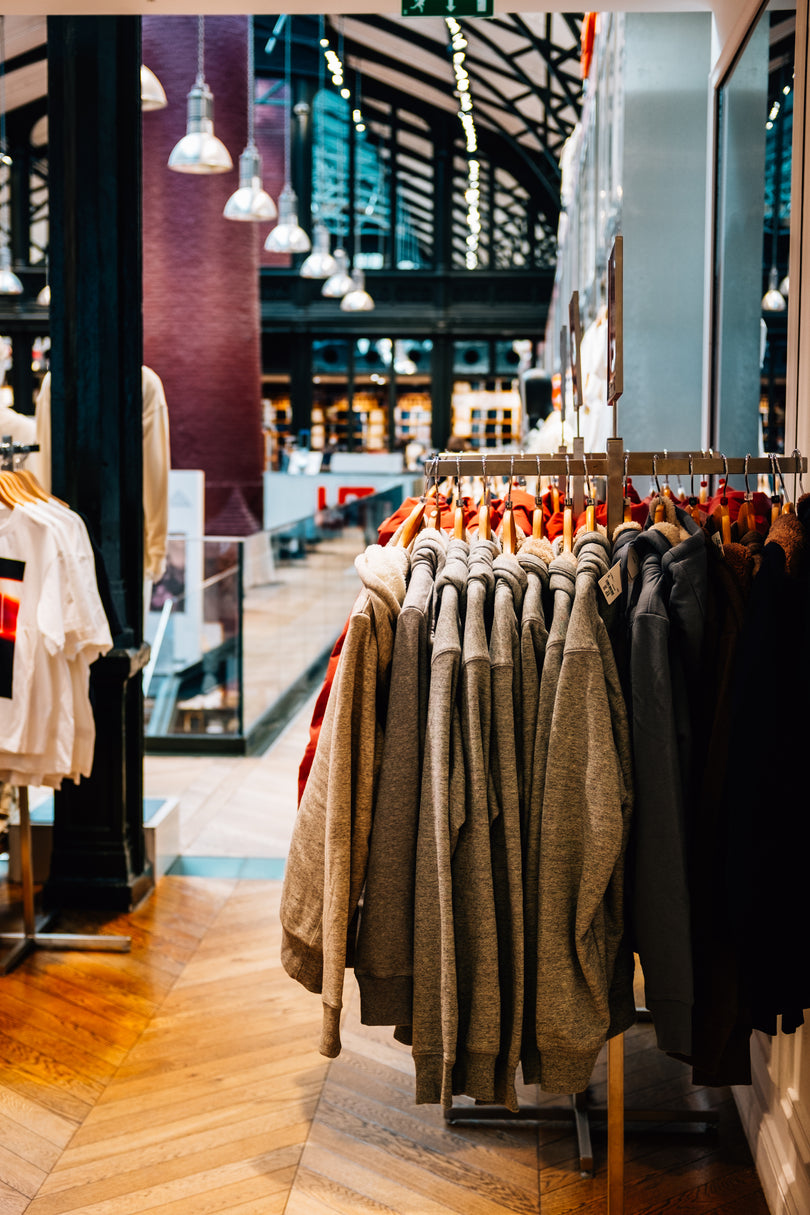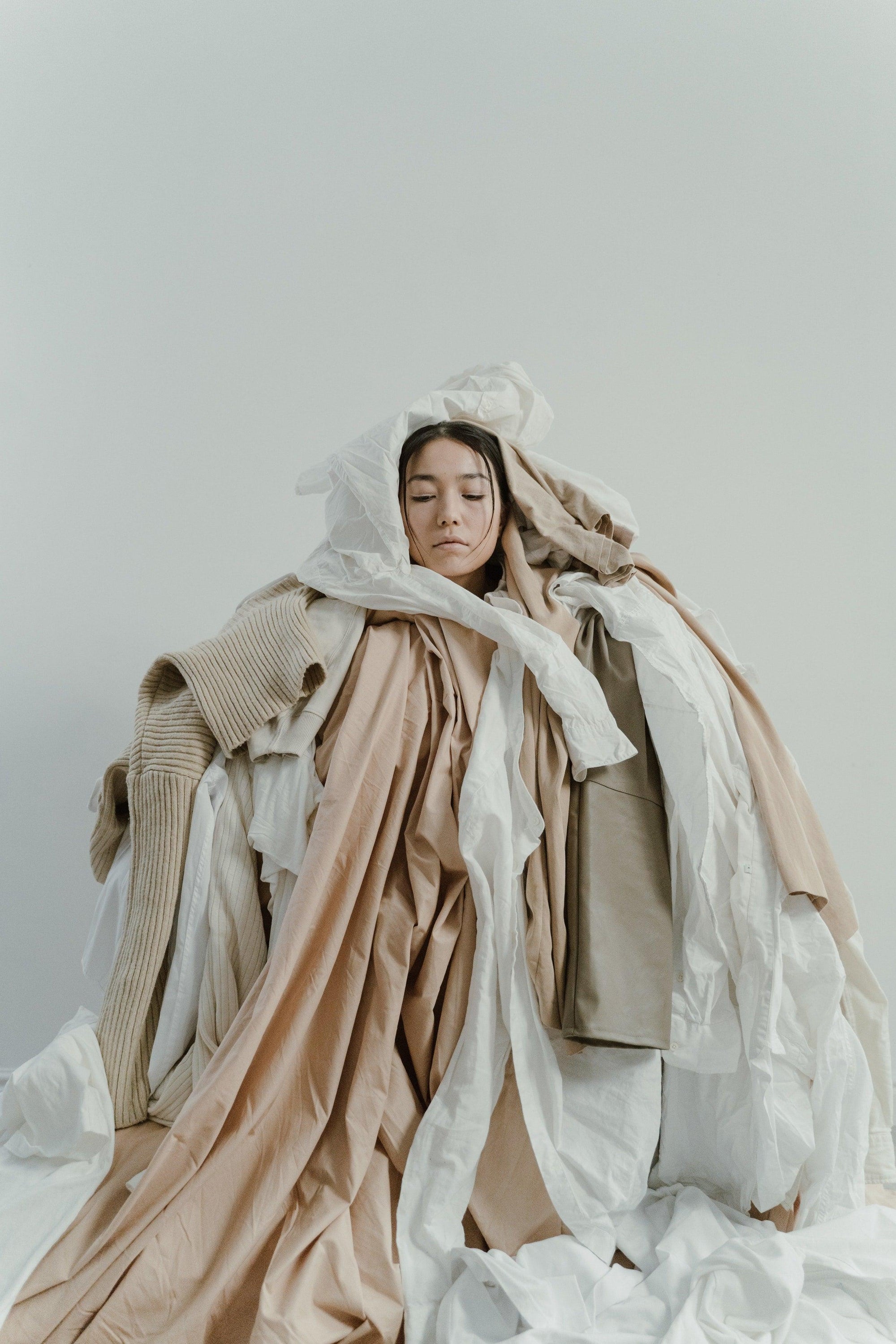Imagine a fashion industry without waste. Organic materials, upcycle and recycle schemes offered as part of purchasing, minimal water usage in industrial processes, community clothes swaps, rental platforms as popular as normal stores, forgotten fabric turned into something beautiful and unique, and much more, all adding up to a circular fashion industry. But also a long, long way off, right? Maybe not.
As it currently works, the fashion industry cannot be sustainable, because it values profit and growth over people and the environment. Fast fashion companies have created a broken industry; polluting the earth and flooding the market with cheap clothes at the expense of their supply chain workers. Meanwhile, consumers are perpetuating the buy-use-throw-away mindset with constant social media hauls, and sharing their overconsumptive habits online; at the time of writing, the hashtag ‘clothinghaul’ has 1.6 billion views on Tiktok, an endless amount of clothes opened, worn and returned just for online influence. Even if consumers donate their old clothes instead of throwing them away, the majority of them end up overseas in developing countries, creating environmental disasters and stunting economic growth.
We need to switch to circular fashion, meaning clothes are designed, used and recycled back into the system with longevity in mind. If any progress is to be made from our current linear model into a circular economy, we need a complete systems change for fashion, from supply chain transparency to brand advertising and communication. According to the Ellen McArthur Foundation, the vision for the future has three key principles: “eliminating waste and pollution, keeping products and materials in use, and regenerating natural systems.”

An easy guide to different fashion economies, including circular fashion, courtesy of Common Objective.
Creating a Circular Fashion Industry
Fixing fashion’s supply chain is one way to start building a circular economy. Roughly 70 per cent of fashion’s greenhouse gas emissions originate in the supply chain, such as pumping water to irrigation crops (like cotton) which is often made unethically and unsustainably, capitalised by the fast fashion industry for its cheapness. For fashion to become eco-friendly at mass scale, brands need to work with farmers to create organic, natural fibres, as well as develop innovative designs that enable fabric to stay in the system for as long as possible once made. By considering a garment’s lifecycle from the beginning, we can lay the best foundations for a circular economy.
Deadstock fabric is an ingenious way of using up the waste our economy has already created (for more info on what deadstock fabric is, read our blog). Taking discarded and unloved fabric and designing it into something new reduces the mountain of textiles sent to landfills, not to mention creates an opportunity for unique, well-designed clothes infinitely more sustainable than fast fashion. After all, our ethos is that “no product is more sustainable than those already produced.” Using deadstock is one of the many ways we can “design waste out of the system” and begin to clean up our careless industry.
Tackling the current mindset toward fashion is one of the biggest hurdles standing in the way of circularity. It’s reported one in three young women, the biggest segment of consumers, consider garments worn once or twice to be old, and are likely to discard clothes at a rapid pace. To distance ourselves from the problem, we need to prolong a garment’s lifespan and change shoppers’ mindsets to one that values clothing more than trends, and normalises outfit repeating over the constant cycle of newness. This is often described as the five ‘R’s’: Reusing, Repairing, Renting, Redesigning and Reselling. Redesigning, more commonly dubbed ‘upcycling’, has already seen a surge of acceptance over the pandemic; the hashtag #upcycling currently has 2.2Billion views on TikTok and counting. By constantly reimagining a garment’s possibilities, we can keep it in use for as long as possible and shift towards a slow fashion mindset.
Currently, less than 1% of clothing is recycled into garments of the same or similar quality, and a further 12% is ‘down-cycled’ into less valuable items for other industries, largely because we don’t have the correct infrastructure in place. Whilst in some cases recycling schemes have been criticised for incentivising further purchasing via voucher-based rewards, they also make the recovery of unwanted clothing infinitely easier for shoppers. In a circular system, once garments are recovered they can be broken down and reused into new material. Once the natural, biodegradable fibres are no longer able to be reused they could be returned to nature relatively simply - a far cry from the packed landfills we currently rely on.
It is up to all of us to help create and cultivate a circular fashion economy which places sustainability at the centre of its values. From reducing waste in the system at both production and consumer levels to using up deadstock fabrics to eliminate what’s already been created, we can create a better functioning, modern system. However, this utopian future cannot be achieved without a complete systems change, combining efforts at every stage of a garment’s lifespan to achieve the solution.




